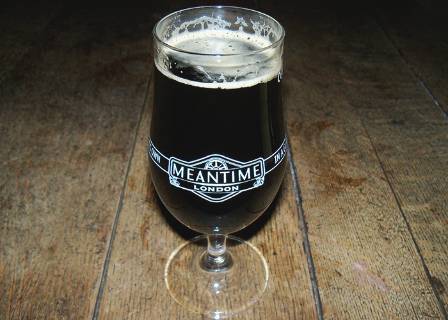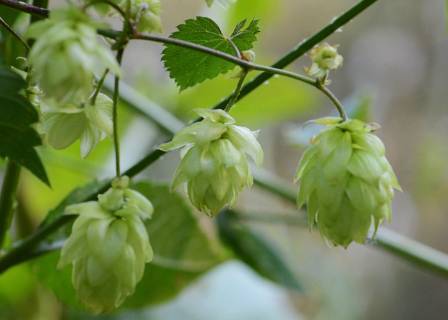Last week I went to a pub in south London and enjoyed a winter barbeque and a few glasses of beer. But it wasn't just any beer. It was beer brewed with hops grown in the Museum's own Wildlife Garden.
Back in spring, Greenwich craft brewery, Meantime, planted hundreds of hop plants all around the capital (from Royal parks to roof gardens and even on roundabouts) as part of its mission to make a 'true brew' of London.
The hop crops were harvested in September (actually, a little earlier in the Museum's case, as our regular sheep visitors took a fancy to our plants), and last week I was one of the first people to taste the result of the 'crowd sourced' beer project at the launch of Hop City Porter.
Meantime says Hop City Porter is 'a complex, dark malt porter that’s full of flavour and character, including hints of chocolate, coffee and caramel and a distinct hop freshness'. Me and my fellow drinkers agreed that it tasted pretty nice and found it, surprisingly for a dark beer, light and refreshing.
Hops are the female flower of the hop plant, Humulus lupulus, a perennial of the Cannabaceae family (which also includes cannabis) and are native in hedgerows, scrub and fen carr (woodland). The flowers are made up of papery, leaf-like bracts. At the base of their cone-like structure, underneath the bracts, are oily glands of lupulin. It is this glandular substance that is used in the brewing process.
Hops is one of the basic ingredients in beer brewing, along with grain (barley and wheat), yeast, and water. The bitterness of hops balances the maltiness of the grain and also acts as a preservative.
Photograph © Radio Tonreg.
But it's not just barflies that benefit from hops. Our Wildlife Garden grows hop plants in several locations (in the interests of a biodiverse habitat, not just bespoke beer projects) and they serve as an important food source for the comma butterfly. Plant lore-ist Roy Vickery says that hop plants can also be used as a sleep aid, and are said to bring good luck when hung in the house.
The comma butterfly, Polygonia c-album, is so named for the little cresent, comma-like, marks on the underside of its wings.





